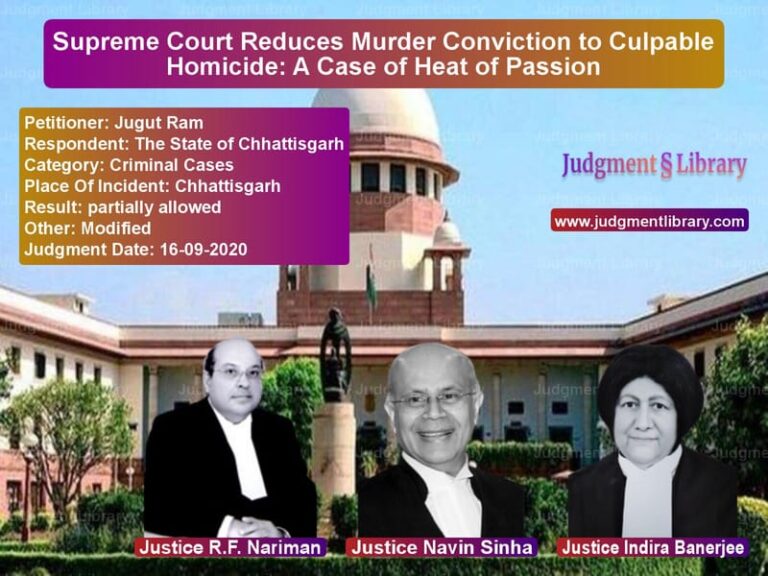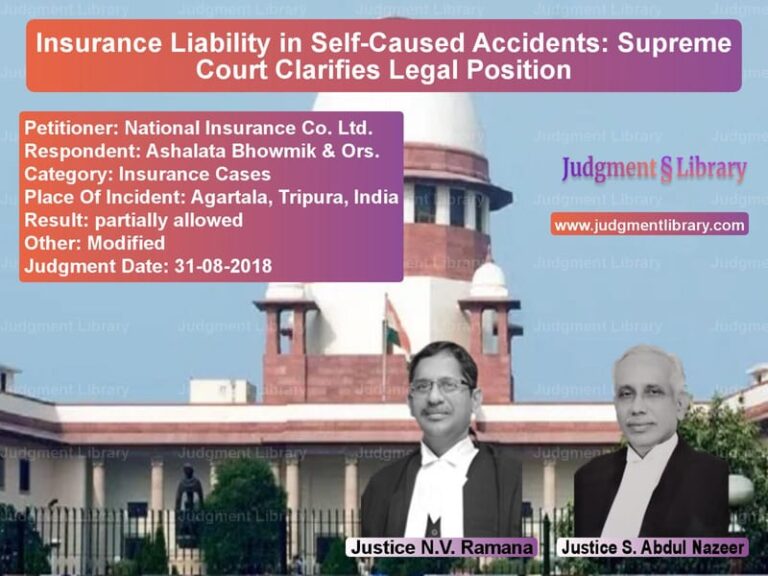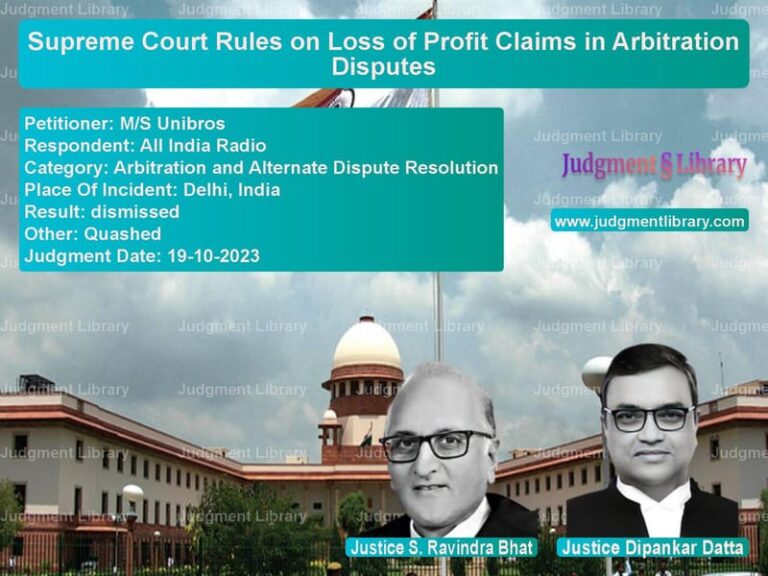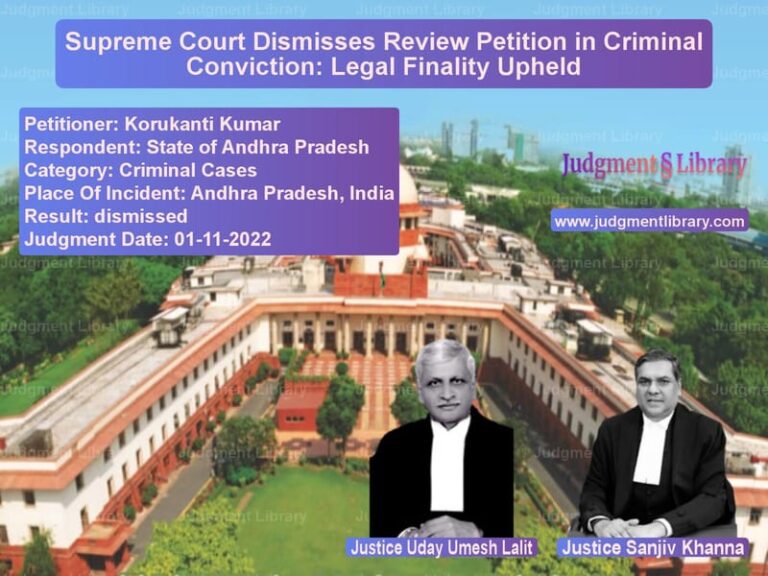Equal Pay for Equal Work: Supreme Court’s Ruling on Service Conditions
The principle of “Equal Pay for Equal Work” has been an evolving doctrine in Indian jurisprudence. While not explicitly enshrined as a fundamental right, it has been recognized as a constitutional objective to prevent unjustified pay discrimination. The Supreme Court, in State of Bihar and Ors. vs. The Bihar Secondary Teachers Struggle Committee, Munger & Ors., addressed this issue in detail.
This case revolved around a challenge by secondary teachers in Bihar, who claimed they were being paid less than other similarly placed employees performing identical duties. The respondents—the State of Bihar—argued that differences in recruitment procedures, qualifications, and tenure of employment justified the pay disparity.
Legal Context and Precedents
The Supreme Court examined several landmark cases, including Randhir Singh vs. Union of India, which established that:
“The principle of ‘Equal Pay for Equal Work’ is not an abstract doctrine but one that has practical implications. However, classification based on legitimate grounds such as experience and qualifications is permissible.”
It also referred to the case of State of Punjab vs. Jagjit Singh, where it was held that:
“Daily wage employees engaged in work similar to regular employees cannot be denied equal pay without valid justification.”
Arguments by the Petitioners (Teachers’ Association)
The teachers contended that:
- They were discharging identical duties as other government-employed teachers.
- The disparity in pay was arbitrary and violative of Article 14 (Right to Equality) and Article 39(d) of the Constitution.
- There was no rational basis for paying them less than their counterparts in other departments.
Arguments by the Respondents (State of Bihar)
The government countered:
- The recruitment process for different categories of teachers varied significantly.
- Regular teachers were appointed through competitive examinations, while petitioners were hired on contract.
- Differences in service conditions justified variations in pay.
Supreme Court’s Key Observations
The Supreme Court examined the matter in depth and made the following key observations:
1. Equal Pay Requires Equal Responsibility
- The Court reiterated that pay scales must be determined based on responsibility, skill, and educational qualifications.
- It noted, “The quality of work, nature of responsibilities, and the method of recruitment are essential factors in deciding pay parity.”
2. Contractual Employment Can Justify Pay Differences
- The Court ruled that contract-based appointments do not automatically entitle employees to the same pay as regular government servants.
- “Persons appointed through a different process cannot claim absolute equality in pay without considering other relevant factors.”
3. Judicial Restraint in Pay Determination
- The Court emphasized that pay fixation is a policy matter best left to the executive and expert committees.
- “Courts should not interfere in matters of pay scales unless there is clear evidence of discrimination.”
Final Judgment
The Supreme Court ruled:
- The claim for equal pay was not justified as the petitioners failed to establish complete parity in responsibilities.
- The principle of “Equal Pay for Equal Work” must be applied cautiously, taking into account service conditions.
- The petition was dismissed, upholding the government’s position on differential pay.
Implications of the Judgment
The ruling has far-reaching implications for employment disputes:
1. Defining the Scope of Equal Pay Doctrine
- The judgment clarifies that equal pay cannot be claimed solely based on job similarity but requires equal qualifications and recruitment processes.
- Employers can justify pay differences if they demonstrate valid policy considerations.
2. Impact on Contractual Employees
- Contract workers cannot demand the same pay as regular employees unless they fulfill identical criteria.
- The ruling ensures that government bodies maintain flexibility in employment practices.
3. Limiting Judicial Overreach in Pay Fixation
- The decision reinforces that pay scale determination is an executive function, not a judicial one.
- Courts will only intervene in cases of clear and arbitrary discrimination.
Conclusion
The Supreme Court’s ruling in State of Bihar and Ors. vs. The Bihar Secondary Teachers Struggle Committee, Munger & Ors. provides much-needed clarity on the application of the “Equal Pay for Equal Work” doctrine. While reaffirming the importance of pay parity, the judgment ensures that distinctions based on recruitment process and service conditions remain valid. This case sets an important precedent for future disputes involving employment and compensation policies.
Petitioner Name: The Bihar Secondary Teachers Struggle Committee, Munger & Ors..Respondent Name: State of Bihar and Ors..Judgment By: Justice Uday Umesh Lalit, Justice Abhay Manohar Sapre.Place Of Incident: Bihar.Judgment Date: 10-05-2019.
Don’t miss out on the full details! Download the complete judgment in PDF format below and gain valuable insights instantly!
Download Judgment: The Bihar Secondary vs State of Bihar and O Supreme Court of India Judgment Dated 10-05-2019.pdf
Direct Downlaod Judgment: Direct downlaod this Judgment
See all petitions in Employment Disputes
See all petitions in Recruitment Policies
See all petitions in Public Sector Employees
See all petitions in Judgment by Uday Umesh Lalit
See all petitions in Judgment by Abhay Manohar Sapre
See all petitions in dismissed
See all petitions in supreme court of India judgments May 2019
See all petitions in 2019 judgments
See all posts in Service Matters Category
See all allowed petitions in Service Matters Category
See all Dismissed petitions in Service Matters Category
See all partially allowed petitions in Service Matters Category







